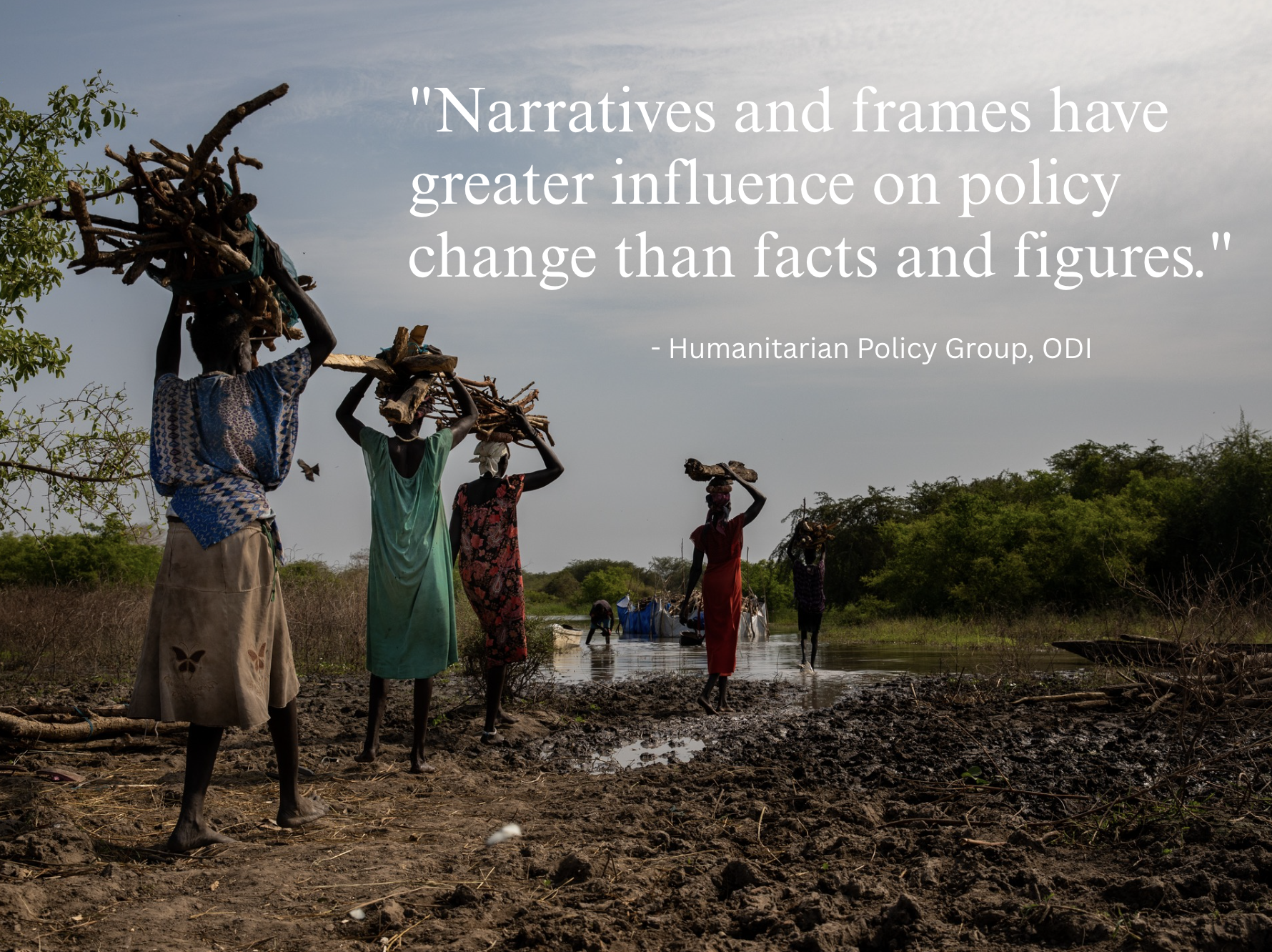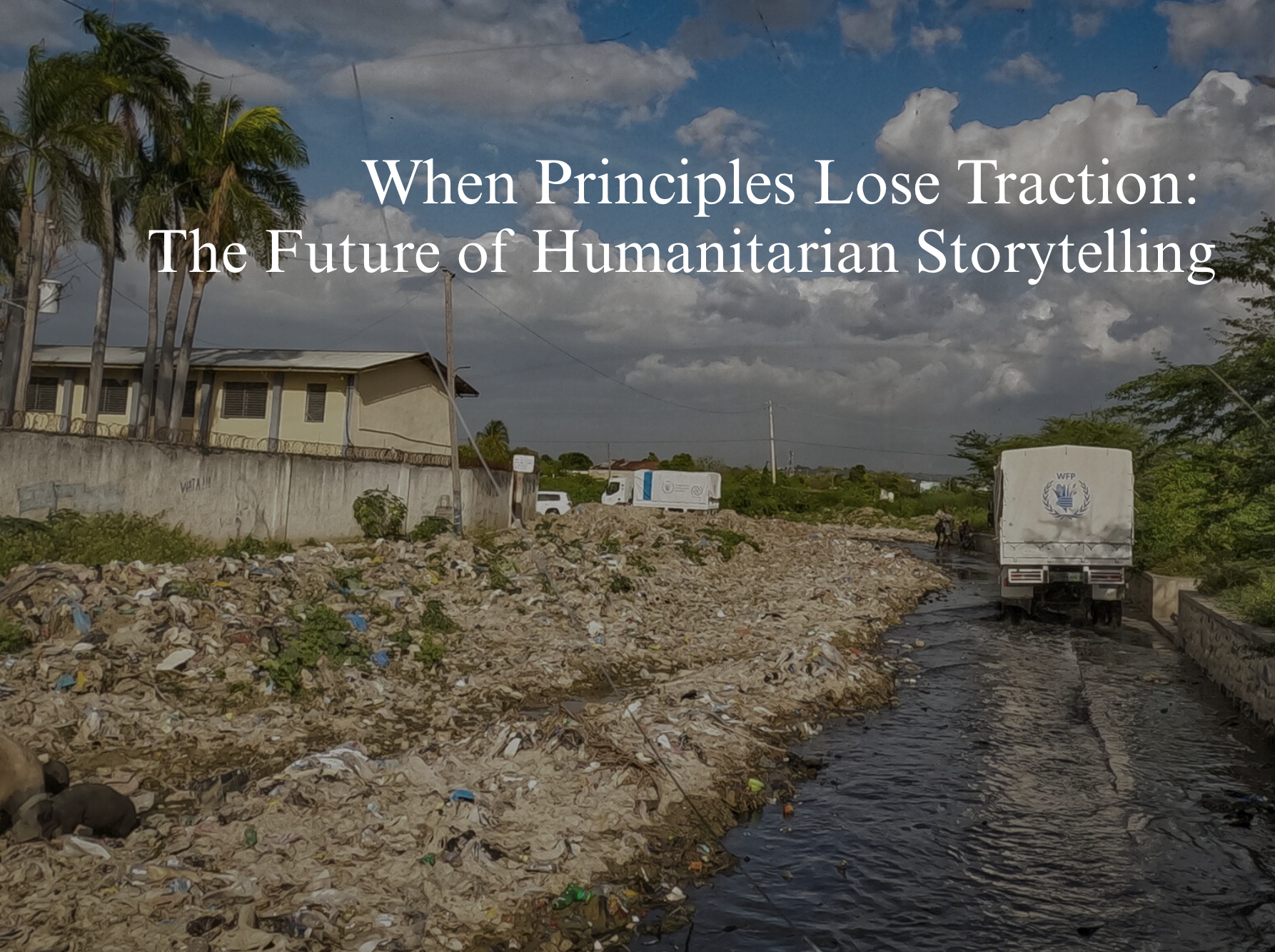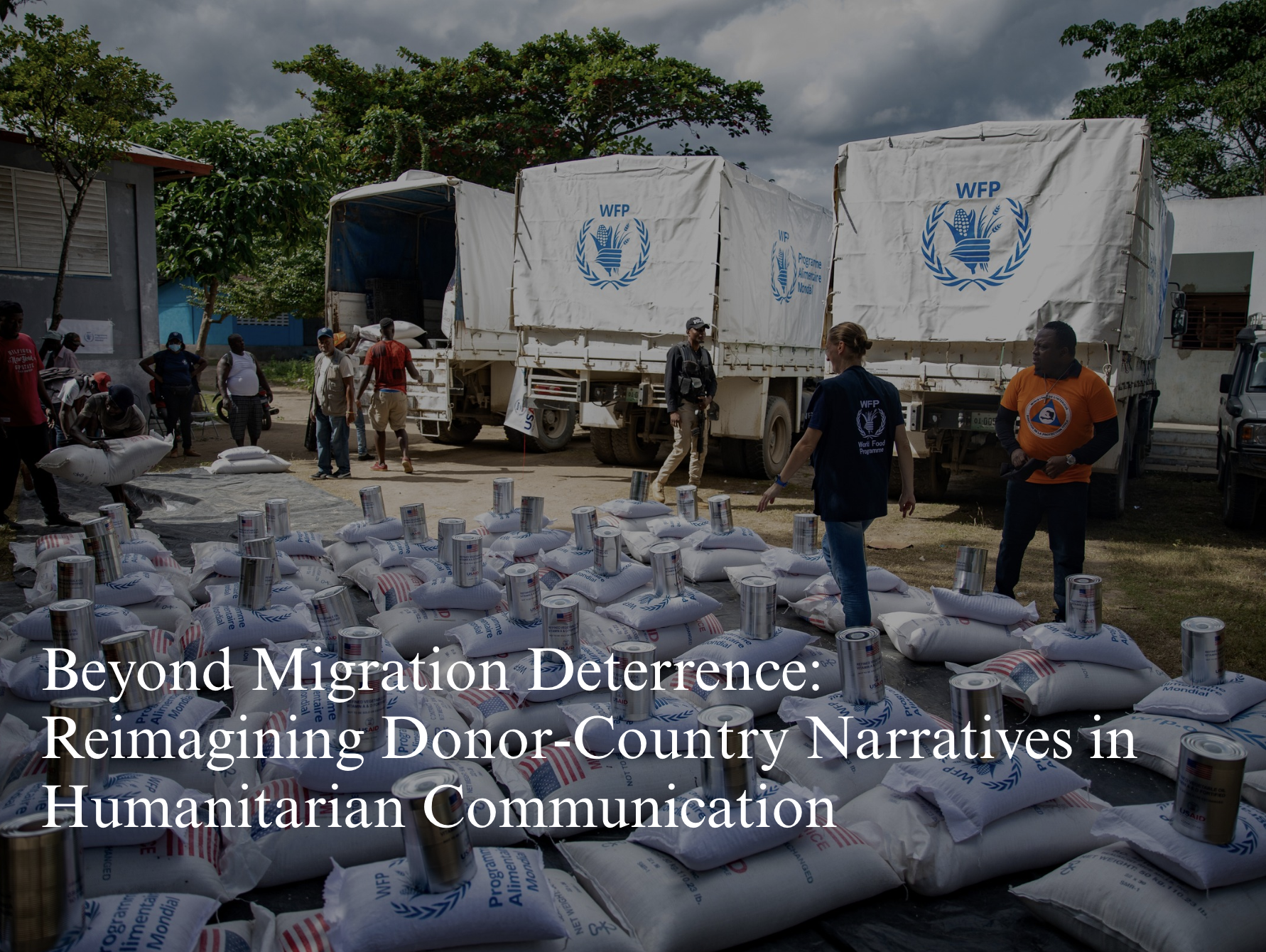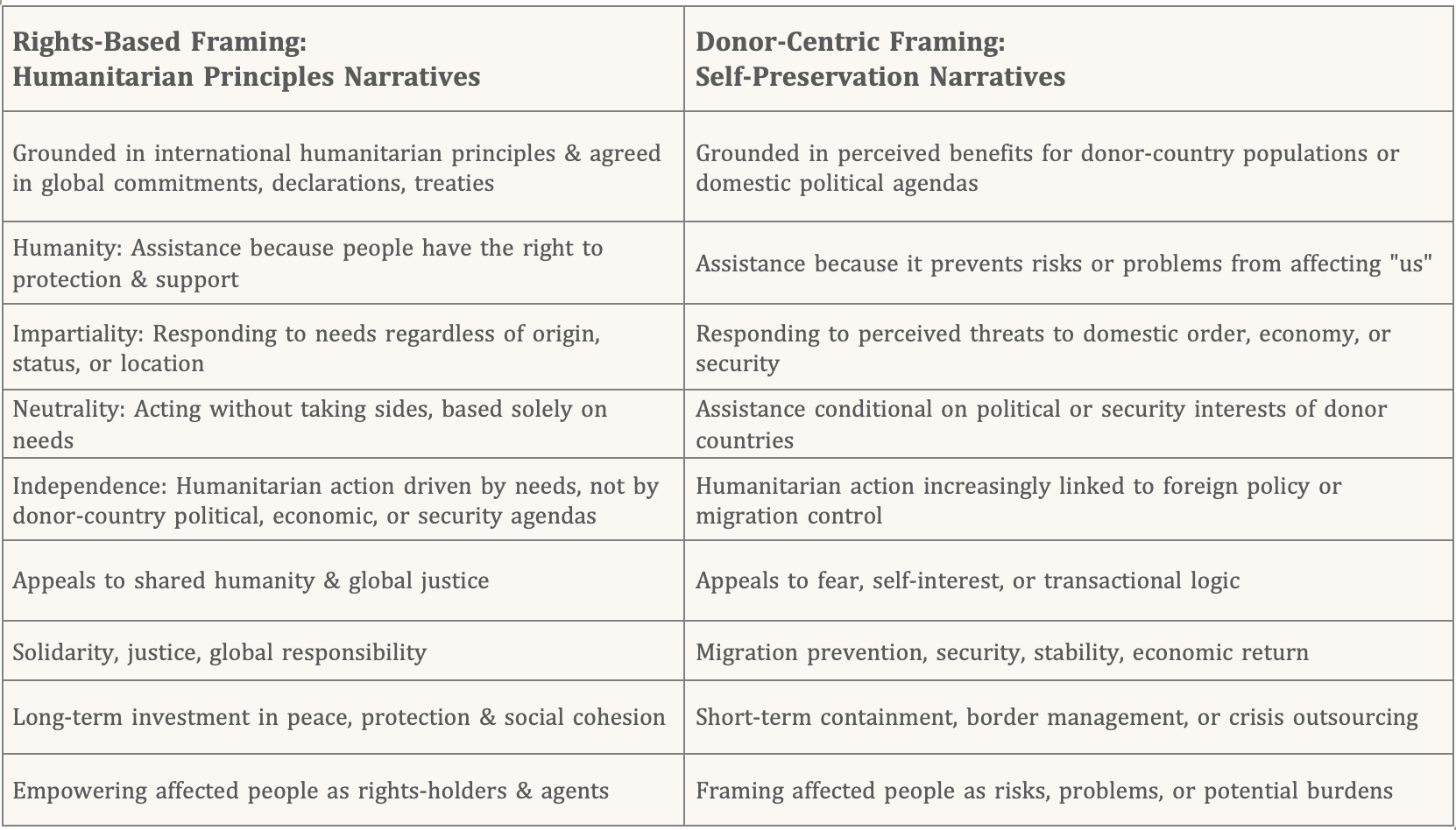
Rewriting the Narrative: A New Chapter in Humanitarian Communication
-

Strong humanitarian narratives don’t begin with a compelling story — they begin with a compelling reason. For too long, we've leaned on person-centered storytelling to spark empathy, often relying on emotional portrayals of individuals to create urgency. But in an age of donor fatigue and an overwhelming sense of insecurity, this approach is reaching its limits.
-

As humanitarian principles lose their power in public discourse, the narratives we rely on are undergoing a fundamental shift. A moral imperative that once mobilized empathy is now being replaced by messaging shaped around domestic interests, political expediency, and the logic of containment. In this shifting landscape, the future of humanitarian storytelling depends on our ability to adapt without abandoning the values that once defined our work.
-

When humanitarian principles no longer persuade, how do we speak to donor-country audiences without compromising our values? This post explores why framing assistance as a tool for migration deterrence falls short — and offers stronger, more honest narratives that connect humanitarian work to global stability, climate, health, and shared futures.
08.04.2025
From Messaging to Meaning: Why Humanitarian Communication Needs an Advocacy Anchor
I’ve spent much of my career making humanitarian work visible — through stories, press releases, and campaigns. I’ve often worked at the intersection of communication and advocacy, refining messages, navigating sensitivities, and adapting language for governments, donors, and global audiences. But only recently did I start to question the order of operations.
This isn’t just a personal reflection — it’s a structural one. In a [UN] system where advocacy and communication are often more siloed than they should be, how do we shift to a model where advocacy, not visibility, drives our messaging?
Two Sides, One Strategy
We’re living through a moment of narrative erosion. Government donors — from the US to Germany — are pulling back. Populist rhetoric is reshaping global engagement. Humanitarian principles that once formed the foundation of our “why” are losing traction — politically and publicly.
In this context, communication can’t just describe. It has to advance. It must build political space for assistance where that space is shrinking — and reaffirm the reasons it ever existed in the first place.
Messaging Starts With ‘Why’
Strong humanitarian narratives don’t begin with a compelling story — they begin with a compelling reason. For too long, we've leaned on person-centered storytelling to spark empathy, often relying on emotional portrayals of individuals to create urgency. But in an age of donor fatigue and an overwhelming sense of insecurity, this approach is reaching its limits.
While telling stories that “hope to move hearts“ still have their place, we must also speak more clearly to shared responsibilities, justice, and collective morality.
When communication isn’t rooted in advocacy:
We risk defaulting to charity language instead of rights-based framing.
We risk centering narratives on the helpers rather than those affected.
We risk leaning on the dramatic instead of the strategic.
But when messaging is anchored in advocacy, it can shape policy debates, shift public narratives, and push back against a shrinking space for humanitarian action.
From Supporting Role to Strategic Anchor
Advocacy has always been part of my work — but it hasn’t always been where I started. With shrinking budgets, declining trust, and humanitarian values under pressure, there’s a growing need to co-shape humanitarian narratives from the ground up.
Our messaging must do more than accompany action. It must reclaim political intent, remind audiences of legal and moral obligations, and reframe what humanitarianism stands for.
A Call for Strategic Honesty
There is no “after the fact” anymore. Communication is advocacy — whether we intend it or not. The messages we share shape what people perceive as urgent, necessary, or even possible. They’re not the soft front. They’re the sharp edge.
In upcoming posts, I’ll explore how humanitarian principles are losing traction among the general population — and how we can build narratives that speak to today’s realities without losing sight of our values.
11.04.2025
When Principles Lose Traction: The Future of Humanitarian Storytelling
Rights-Based Framing vs. Donor-Centric Framing
When humanitarian principles lose traction in public and political discourse, the stories told about assistance start to shift. Increasingly, narratives move away from needs, rights, and global solidarity — towards donor-centric framing that speaks to domestic fears, interests, or migration control logic.
But these two approaches aren’t just different styles of communication — they reflect fundamentally different understandings of what humanitarian assistance is for.
Here’s what that contrast looks like when set side by side:
When Fear Wins, Solidarity Loses
Today, we are witnessing the quiet retreat of humanitarian principles from public and political life. This isn’t accidental — it’s political logic. Othering populations, ranking people’s worth, denying international commitments — these are all classic mechanisms of populist politics.
The very narratives that once positioned major donors as global humanitarian leaders are quietly being replaced by the language of migration control, security, and self-preservation.
What This Means for Humanitarian Communication and Advocacy
The logic of humanitarian assistance is changing — and with it, the stories we tell. Assistance is increasingly seen through the lens of donor-country interests: What’s in it for “us”?
This isn’t just a messaging challenge. It’s a deeper risk: if humanitarian communication adapts to fear-driven, donor-centric logic, it becomes part of the problem.
So What Now?
We need to recognise this moment for what it is — not just a funding crisis, but a values crisis.
If humanitarian principles struggle to mobilise political will, what other narratives do we have? And how can we avoid falling into the next trap: adjusting our communication to what seems to work — stories that soothe domestic fears or promise control.
What seems like an easy way out comes at a cost. The more we compromise our narratives, the more we undermine the very values humanitarian assistance stands for.
In my next blog post, I’ll unpack one of the most popular — and most problematic — donor-centric arguments: migration deterrence. I’ll explain why it’s so ineffective, misleading, and ultimately damaging. And I’ll explore stronger, more honest, and more relevant narrative options — without compromising humanitarian values.


